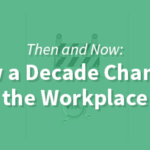An HR Glossary for HR Terms
B
Basic Salary Meaning
Benefits Administration
Bereavement
Boomerang Employee
Business Agility
C
Career Plateau
Competency Based Pay
D
Disability Leave
Dual Labor Market
E
Employee Benefits
Employee Benefits Administration
Employee Database
Employee Empowerment
Employee Engagement in HR
Employee Management
Employee Net Promoter Score (eNPS)
Employee Onboarding
Employee Orientation
Employee Relations
Employee Satisfaction
Employee Turnover
F
Flexible Spending Account (FSA)
H
Health Maintenance Organisation (HMO)
Health Reimbursement Account (HRA)
Health Savings Account (HSA)
HR Business Partner
Human Capital Management (HCM)
Human Resources Information System (
Human Resources Management System (HRMS)
I
Indirect Compensation
Informal Communication
J
Job Classification
K
Knowledge Management
M
Military Leave from Work
O
Occupational Stress
Onboarding
P
Paid Time Off (PTO)
Passive Candidate
Payroll Software
Performance Improvement
Performance Management
Performance Review
Preferred Provider Organisation
Q
Qualifying Life Event
R
Recruiting Software
S
Sourcing
T
Talent Acquisition
Talent Management
Time-to-Hire
Time Tracking
360 Survey
What is a 360 Degree Suvey?
A 360º survey is a process that solicits feedback on employee performance from several different sources: from managers, from peers, from reports, and from a self-assessment. In cases where the employee interacts with the public, a 360 survey may also include feedback from clients, suppliers, contractors, or vendors.
While 360º surveys were pioneered as early as the 1950s, gathering, storing, and reviewing feedback data on paper was a time-consuming process. With the rise of Internet-enabled communication in the 1990s, the practice started gaining momentum.
As with other feedback sources, one of the challenges with 360 surveys is deciding how to apply this feedback when making decisions. This should be consistent with an organisation’s performance management philosophy, which should promote two outcomes: accountability for past performance and employee development for future performance.
360º surveys tend to be more helpful in the development of future performance than in creating metrics for a traditional performance review. While feedback from adjacent people can be helpful in finding better ways for employees to interact with coworkers or clients, coworkers and subordinates don’t have all the information that an employee’s direct manager has. Using 360 surveys to determine compensation or promotions may also open up possible discrimination.
Nevertheless, frequent 360 surveys can provide insight to help employees improve their performance more than once per year. They also provide a record to help employees stay accountable for their improvement goals and to help managers track progress.
You might also like



